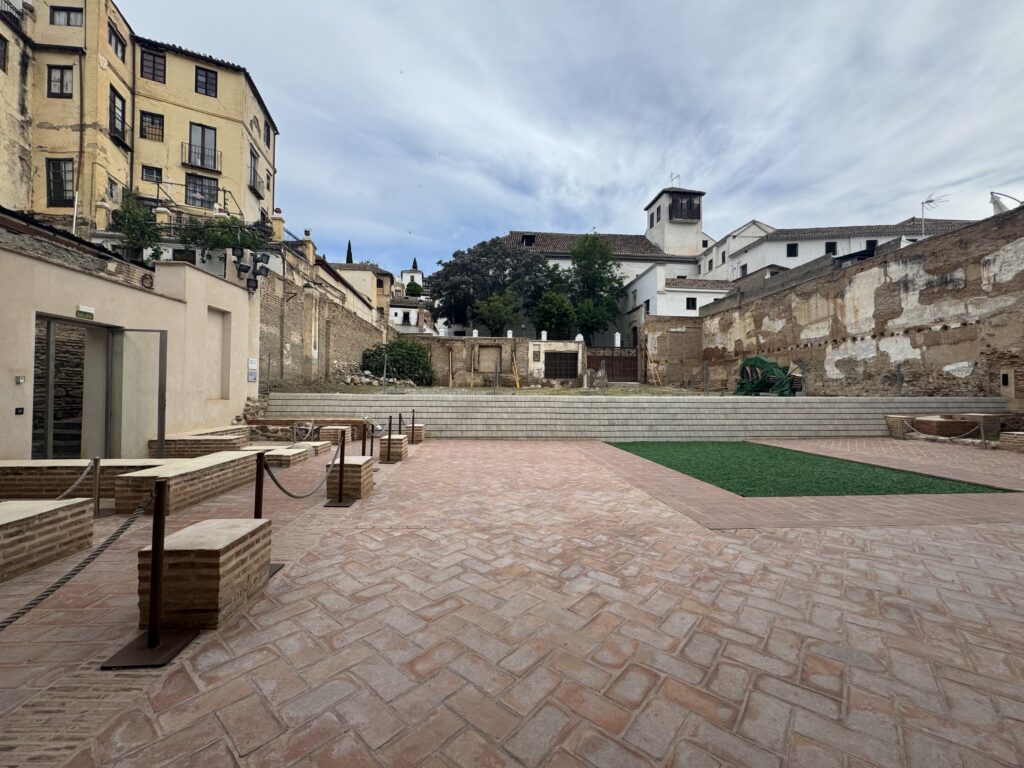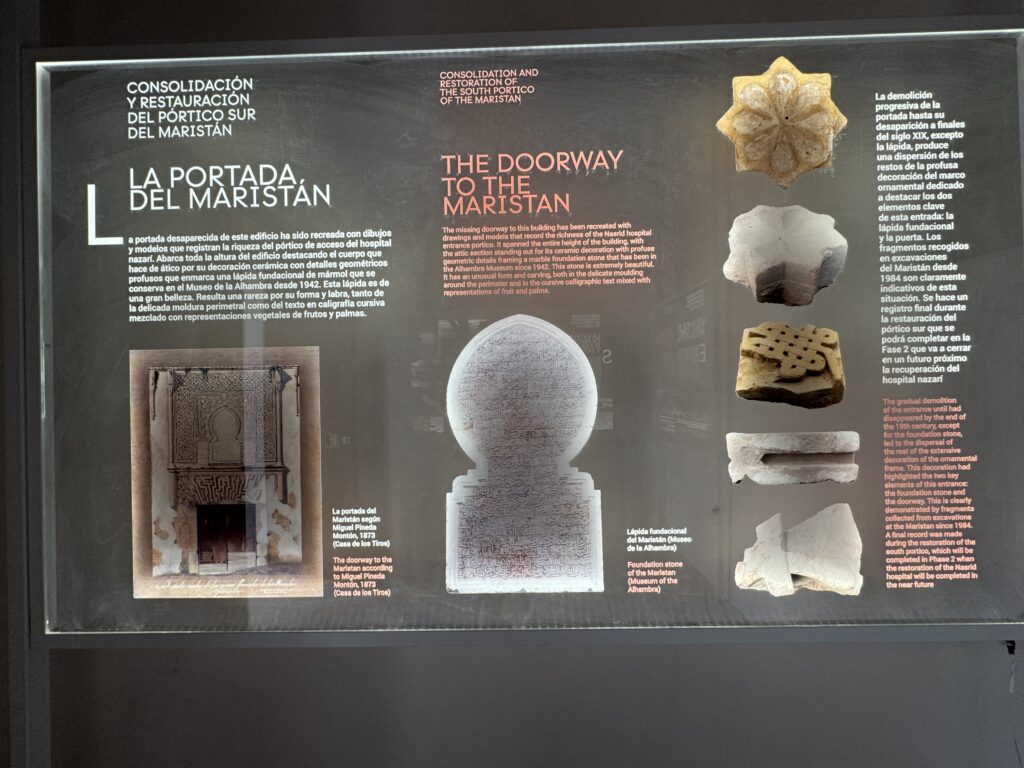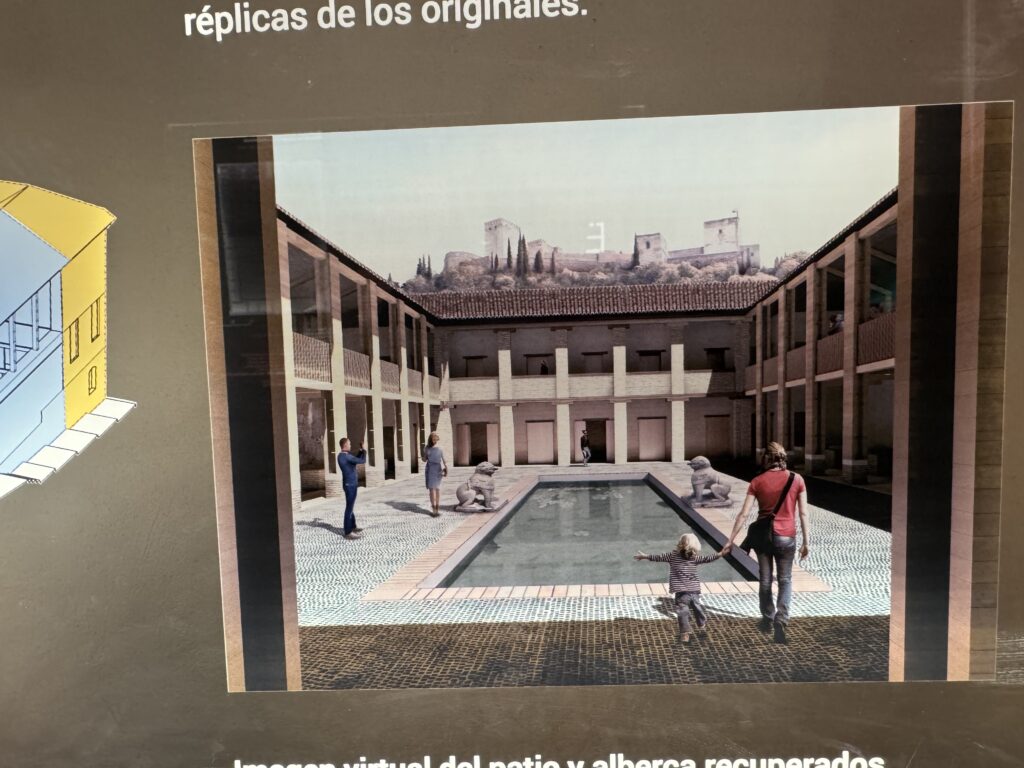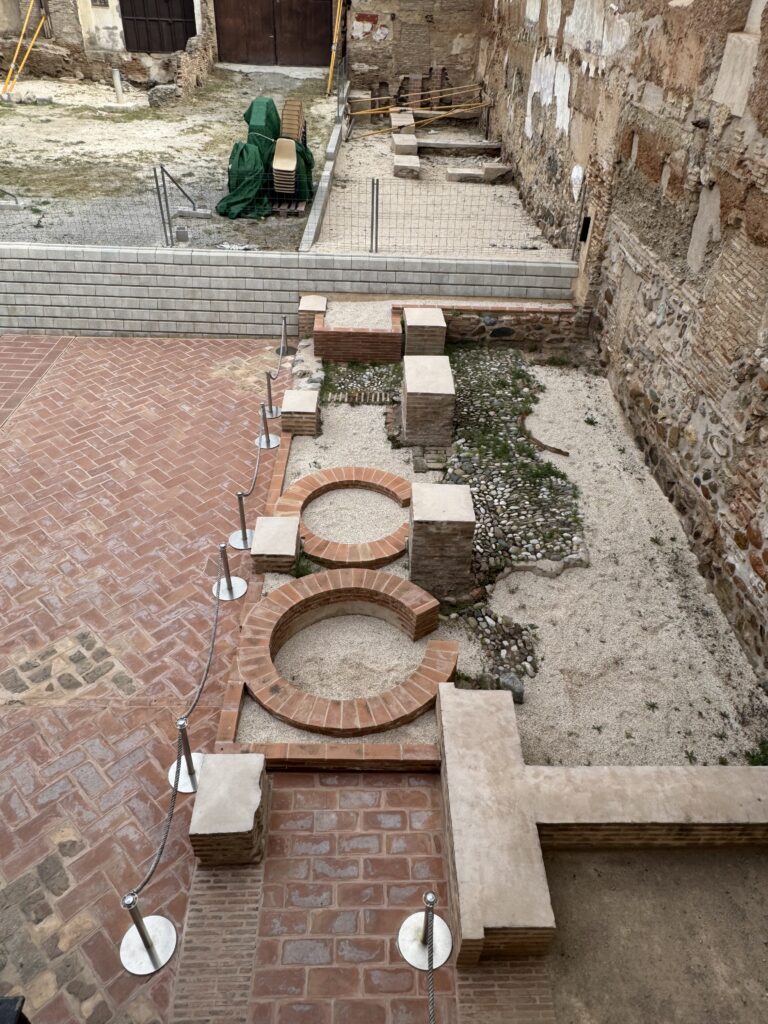El Maristan, Granada was a Nasrid Hopsital from 1367-1494 then the Royal Mint of Granada from 1497-1685 until it was used for various purposes until 1843 when it was partially demolished. I”n 2005 it was declared an Asset of Cultural Interest with the category of monument. The Board of Trustees of the Alhambra and Generalife took charge of the building, promoting Phase 1 of the consolidation and restoration of the south portico between 2017-2022.” (from an exhibit board in the musueum/display area.)

Another of the historic UNESCO sites of lower Albaicin is El Maristan which is the Historic Hospital founded during the 14th century (1365-1367). It was founded when a Nazari sultan, Muhammad V (the eight monarch), established the city’s first hospital at the foot of his palace, the Alhambra. It is very near to the El Banuelo, also a historic healing post written about on this blog/feed. It is a 2-story brick building with a central courtyard, used for medical care (originally as a “house for lunatics”) (Citation: https://www.researchgate.net/publication/235397860_The_Lions_of_Granada_Maristan#:~:text=described%20the%20maristan%20of%20Granada,measuring%206%20by%206%20me%2D) until the Reconquesta of Granada in 1492 by the Christians. To care for the mentally ill, made it the first of its kind in Europe and influenced the development of other similar facilities after its founding. It was then used for a variety of purposes for example as a mint, convent and then a state prison. It was demolished in the 19th century (1843), and because of this the site resembles today an archeological site, and drawings were developed by Ferrer and Gailhabaud because of these archeological invesigations. (Citation: Archnet, Maristan at Granada, 2020-12-17) The building’s living spaces accommodated 200 patients, in 26 rooms on the ground floor .

When I walked into the site it was obvious there were archeological remains to my left in the courtyard. To the right was a building appearing to be a villa which is a restoration (2022-23) of the Maristan original building that survived the demolition. Today the meaning of the word Maristan, is “poorhouse,” and it is associated with original use of this place to serve the needy and the poor. (Citation: https://www.alhambra-patronato.es/en/elemento-del-mes/foundational-tablet-of-maristan) The central courtyard had a fountain, regularly seen in Moorish architecture, with wards opening from all sides the lion statues. The lion statues were made of dark marble, served as guardians of the building and represent courage and splendor of the foundation of the hospital. that were a part of the original building can be seen by the pools of the Alhambra. Replicas will later be installed to the Maristan in Phase 2 of the restoration project. The doorway and windows were ornamented with Arab stucco craftsmanship. The brick was originally covered with plaster. Archeological findings show that there was also decorative tilework, and marble at the site. The facade had a very ornamented entrance, which was arched and had arab motifs. There was an panel which had carved Arabic lettering which is kept in the Alhambra museum today. (Citation: The foundation stone of Granada’s maristan”. Patronato de la Alhambra y Generalife. Retrieved 2020-12-17.)

The building was built using a rammed earth, earth and lime mortar, technique on a masonry base. The restored framing can be seen in at the ceiling of the gallery which had painted details in the original Maristan. The site has a view of the Alhambra over the Maristan, from the courtyard. The garden would have been a great respite to sick patients in the facility to provide for fresh air, daylight and connection with nature that can aid in their recovery, accompanied by the sights and sound of the 2 lion statues spouting water from their mouths into the central fountain/pool.

